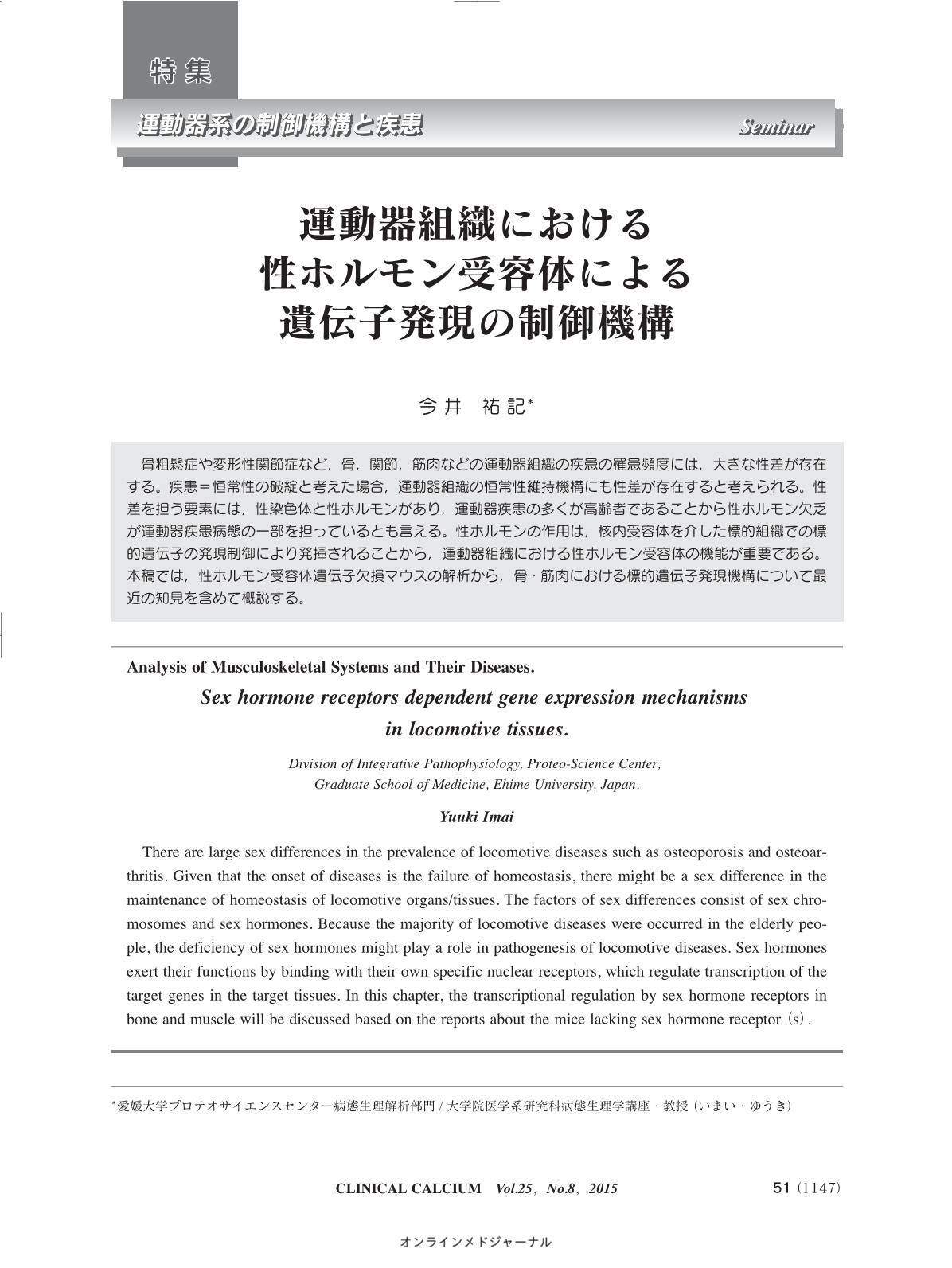Japanese
English
- 有料閲覧
- Abstract 文献概要
- 1ページ目 Look Inside
- 参考文献 Reference
骨粗鬆症や変形性関節症など,骨,関節,筋肉などの運動器組織の疾患の罹患頻度には,大きな性差が存在する。疾患=恒常性の破綻と考えた場合,運動器組織の恒常性維持機構にも性差が存在すると考えられる。性差を担う要素には,性染色体と性ホルモンがあり,運動器疾患の多くが高齢者であることから性ホルモン欠乏が運動器疾患病態の一部を担っているとも言える。性ホルモンの作用は,核内受容体を介した標的組織での標的遺伝子の発現制御により発揮されることから,運動器組織における性ホルモン受容体の機能が重要である。本稿では,性ホルモン受容体遺伝子欠損マウスの解析から,骨・筋肉における標的遺伝子発現機構について最近の知見を含めて概説する。
There are large sex differences in the prevalence of locomotive diseases such as osteoporosis and osteoarthritis. Given that the onset of diseases is the failure of homeostasis, there might be a sex difference in the maintenance of homeostasis of locomotive organs/tissues. The factors of sex differences consist of sex chromosomes and sex hormones. Because the majority of locomotive diseases were occurred in the elderly people, the deficiency of sex hormones might play a role in pathogenesis of locomotive diseases. Sex hormones exert their functions by binding with their own specific nuclear receptors, which regulate transcription of the target genes in the target tissues. In this chapter, the transcriptional regulation by sex hormone receptors in bone and muscle will be discussed based on the reports about the mice lacking sex hormone receptor(s).



